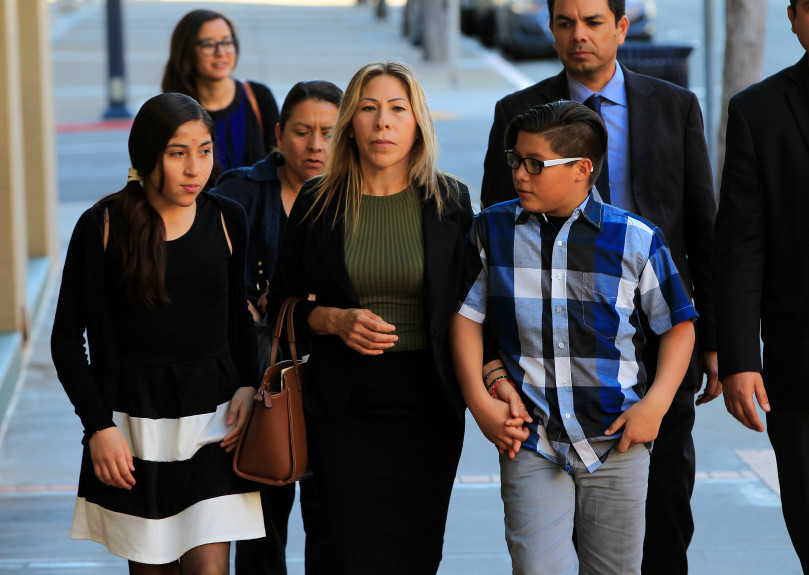A federal judge tentatively approved an agreement for the U.S. government to pay $1 million to the children of a Mexican man who died after being detained by immigration authorities and shot several times with a stun gun.
The settlement considered by U.S. Magistrate Judge Louisa Porter is intended to end a nearly seven-year case that prompted widespread complaints that U.S. immigration authorities tolerated agents who use excessive force. Prosecutors declined to file criminal charges.
The five, U.S.-born children of Anastasio Hernández will split the money if the deal receives final approval, with about a quarter going for attorney fees and costs.
“My husband’s life does not have a price,” Maria Puga, Hernández’s longtime partner and the mother of their five children, said at a news conference after the hearing. “The decision I had to take was difficult. We had to turn the page.”
Pretrial questions were pending before an appeals court and the case had not yet been scheduled for trial.
Puga’s three older children are adults and she also has 10-year-old twins.

With their supporters, Maria Puga, center, arrives with her children to a news conference on Thursday, March 2, 2017, in San Diego, Calif. A federal judge tentatively approved an agreement Thursday for the U.S. government to pay $1 million to the children of Anastasio Hernandez, a Mexican man who died after being detained by immigration authorities and shot several times with a stun gun. Puga was Hernandez’s longtime partner and the mother of their five children. (Eduardo Contreras/The San Diego Union-Tribune via AP)
Before granting final approval on Thursday March 2nd, Porter asked family attorneys to file a document explaining why payments to the two 10-year-olds shouldn’t be subject to probate court proceedings. Hernández did not have a will.
The 42-year-old, unarmed man died after a confrontation with authorities in May 2010 at San Diego’s San Ysidro border crossing with Tijuana, Mexico. Authorities have said he was combative while being returned to Mexico.
The death attracted intense scrutiny in 2012 after an eyewitness video that aired on PBS appeared to show Hernández being shot while lying on the ground, surrounded by about a dozen agents.
Sixteen members of Congress wrote then-Homeland Security Secretary Janet Napolitano to say Hernández’s death “may be emblematic of broader structural problems.”
In 2015, the U.S. Justice Department said it accepted the authorities’ contention that the force they used was reasonable and necessary to restrain Hernández when he was “noncompliant and physically assaultive.” The Mexican government strongly condemned the decision.
Hernandez moved to San Diego from the central Mexican state of San Luis Potosí when he was a teenager and found work in construction.
Hernández was arrested by the Border Patrol with his brother in the mountains east of San Diego, allegedly after entering the country illegally. He was later taken to San Ysidro.
An autopsy found he died of a heart attack, with a heart condition and methamphetamine use listed as contributing factors. The autopsy said Hernández was unresponsive shortly after he was shot with the stun gun, apparently three or four times.
ELLIOT SPAGAT for The Associated Press
Sources:
- http://www.thenews.mx/
- www.youtube.com


